NEW YORK—New York Public Library’s Stephen A. Schwarzman building on Fifth Avenue between 41st and 42nd streets first opened its doors 100 years ago on May 23, 1911. The grand Beaux-Arts masterpiece is one of the world’s best research institutions, and one of the few libraries of its caliber enjoyed freely by the public.
Its majestic marble walls house an extensive collection of rare books. Beyond books, collection items include anti-war etchings by Francisco de Goya, the letter opener Charles Dickens made out of his cat’s paw, Malcolm X’s journal and a photo of him praying in his Elmhurst home, letters to the editor of the New Yorker, and more.
In anticipation of its centennial birthday, the building will open its doors on May 14 to the “Celebrating 100 Years” exhibition, on view until Dec. 31.
The library’s curator, Thomas Mellins, delved into the massive collection of over 60 million pieces, emerging with about 250 artifacts he felt would best express its breadth and depth.
“The library [functions] as nothing less than the memory bank of humanity,” said Mellins.
The memories stretch back 5,000 years to records imprinted on clay tablets or chiseled in stone. A Macbook computer displays breaking news in realtime—memories in the making. Such juxtapositions pervade the exhibition, adding meaning, context, and dialogue.
Mellins stood next to the tiny cuniforms at the entrance to Gottesman Hall, tablets about two inches squared on which Mesopotamians kept track of stock in the 3rd to 5th millenia B.C. He observed that our ancestors were not moved to write out of a passion to be expressive, to tell stories, or to create art.
“What seems to motivate people to write things down is some kind of fear that your brother-in-law was embezzling from the olive oil business that you had going in ancient Babylonia,” laughed Mellins.
Its majestic marble walls house an extensive collection of rare books. Beyond books, collection items include anti-war etchings by Francisco de Goya, the letter opener Charles Dickens made out of his cat’s paw, Malcolm X’s journal and a photo of him praying in his Elmhurst home, letters to the editor of the New Yorker, and more.
In anticipation of its centennial birthday, the building will open its doors on May 14 to the “Celebrating 100 Years” exhibition, on view until Dec. 31.
The library’s curator, Thomas Mellins, delved into the massive collection of over 60 million pieces, emerging with about 250 artifacts he felt would best express its breadth and depth.
“The library [functions] as nothing less than the memory bank of humanity,” said Mellins.
The memories stretch back 5,000 years to records imprinted on clay tablets or chiseled in stone. A Macbook computer displays breaking news in realtime—memories in the making. Such juxtapositions pervade the exhibition, adding meaning, context, and dialogue.
Mellins stood next to the tiny cuniforms at the entrance to Gottesman Hall, tablets about two inches squared on which Mesopotamians kept track of stock in the 3rd to 5th millenia B.C. He observed that our ancestors were not moved to write out of a passion to be expressive, to tell stories, or to create art.
“What seems to motivate people to write things down is some kind of fear that your brother-in-law was embezzling from the olive oil business that you had going in ancient Babylonia,” laughed Mellins.
Near the tablets stands a case containing the first Gutenberg Bible to come to America; the product of the first printing press. The first book to use photographic illustrations is also included, including documentation of algae. Following the evolution of print technology, the first Xerox machine is on display. Chester F. Carlson invented the first Xerox machine in 1938 out of a desire to forever end the tedious task of copying legal documents.
Carlson spent many long nights in the building on Fifth Avenue conducting research, and the design for his invention took form. Many great works were fostered in the creative environment of the Stephen A. Schwarzman building.
“The library’s role [is] not only as a repository of knowledge, but also as an incubator of knowledge and of talent,” said Millens. From Betty Friedan’s “The Feminine Mystique” to “Ghostbusters,” Millens noted that the library has forged into pop culture while remaining rooted in the past. A continuous loop shows scenes from all the movies filmed at the library: “Breakfast at Tiffany’s,” “The Breakfast Club,” and many more.
The “Celebrating 100 Years” exhibition is a tour through the history of literature, art, and the building itself, but it is not ordered chronologically. Millens chose to organize the exhibit around four themes he says are related to the imagination and human experience: observation, contemplation, creativity, and society.
Carlson spent many long nights in the building on Fifth Avenue conducting research, and the design for his invention took form. Many great works were fostered in the creative environment of the Stephen A. Schwarzman building.
“The library’s role [is] not only as a repository of knowledge, but also as an incubator of knowledge and of talent,” said Millens. From Betty Friedan’s “The Feminine Mystique” to “Ghostbusters,” Millens noted that the library has forged into pop culture while remaining rooted in the past. A continuous loop shows scenes from all the movies filmed at the library: “Breakfast at Tiffany’s,” “The Breakfast Club,” and many more.
The “Celebrating 100 Years” exhibition is a tour through the history of literature, art, and the building itself, but it is not ordered chronologically. Millens chose to organize the exhibit around four themes he says are related to the imagination and human experience: observation, contemplation, creativity, and society.
The Human Experience
Millens shared what these themes mean to him.
“Observation, looking out to the world around us; contemplation, looking inward for meaning, the hallmark of civilization and the human experience; creativity, particularly as expressed in literature and the arts … and society, the way in which we have organized ourselves for better or for worse,” explained Millens.
He noted that the library is humankind’s memory bank, not its conscience. The exhibition leaves moral judgment to the viewer, though it does offer prompts through juxtapositions.
In the society section, Eastern moral philosophy meets communism; as the earliest translation of Confucius’s teachings into a Western language stand next to a book of Mao Tse-Dong’s quotations, once owned by his successor Lin Biao, who was condemned as a traitor.
In the creativity section, the power to form young minds is exemplified in a children’s book from 1930s Germany that teaches kids to mistrust wolves in green fields and Jews.
In the contemplation section, Jack Kerouac’s “Rains and Rivers” notebook stands in a case alongside his smoking pipe, glasses, and Valium. It chronicles part of the journey from New York to the distant West, the travels of a small band that would define the beat generation. Kerouac’s journey characterized by promiscuity and intoxication is juxtaposed with Dante Aligheri’s “Divine Comedy”—a famed 15th century tale of one man’s spiritual journey through the suffering of hell, the strange land of purgatory, and to the pure and wonderful paradise above.
He noted that the library is humankind’s memory bank, not its conscience. The exhibition leaves moral judgment to the viewer, though it does offer prompts through juxtapositions.
In the society section, Eastern moral philosophy meets communism; as the earliest translation of Confucius’s teachings into a Western language stand next to a book of Mao Tse-Dong’s quotations, once owned by his successor Lin Biao, who was condemned as a traitor.
In the creativity section, the power to form young minds is exemplified in a children’s book from 1930s Germany that teaches kids to mistrust wolves in green fields and Jews.
In the contemplation section, Jack Kerouac’s “Rains and Rivers” notebook stands in a case alongside his smoking pipe, glasses, and Valium. It chronicles part of the journey from New York to the distant West, the travels of a small band that would define the beat generation. Kerouac’s journey characterized by promiscuity and intoxication is juxtaposed with Dante Aligheri’s “Divine Comedy”—a famed 15th century tale of one man’s spiritual journey through the suffering of hell, the strange land of purgatory, and to the pure and wonderful paradise above.
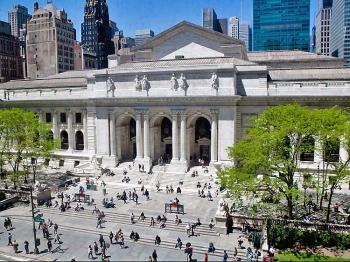

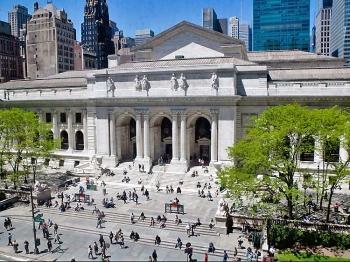
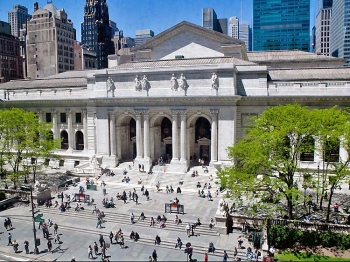
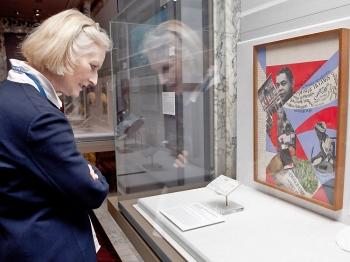
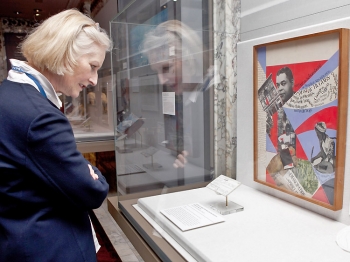
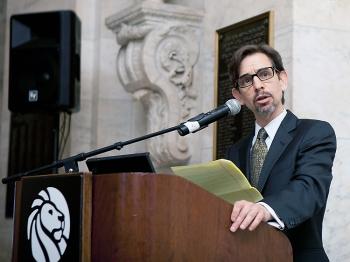
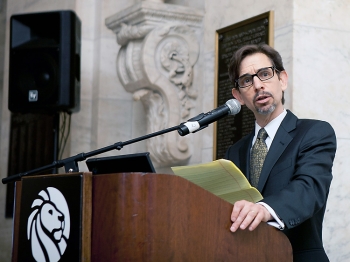




Friends Read Free